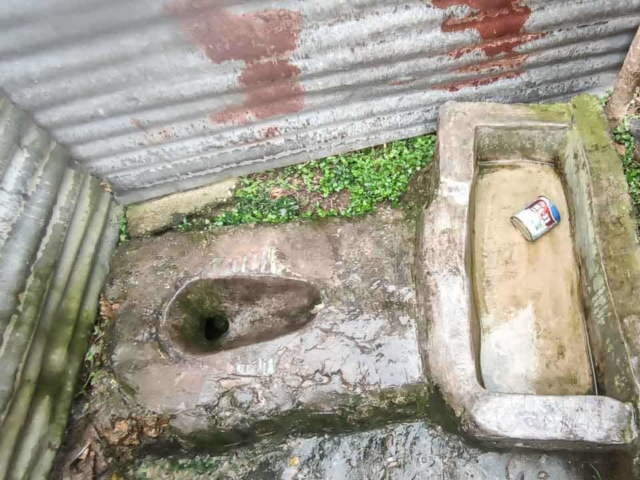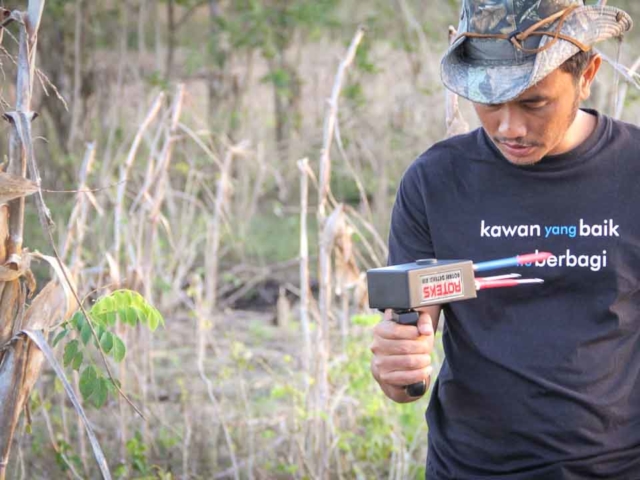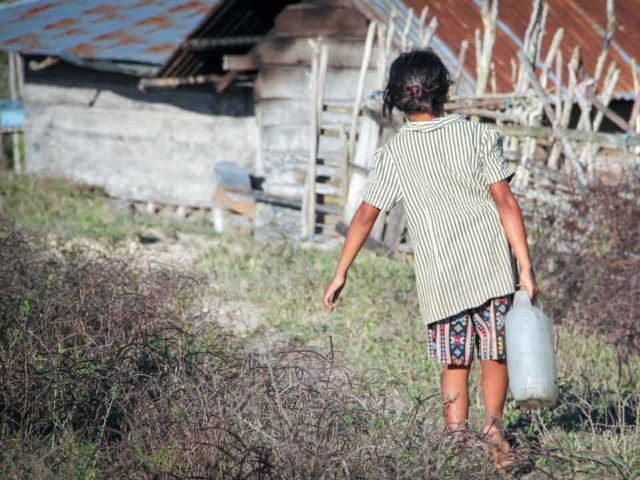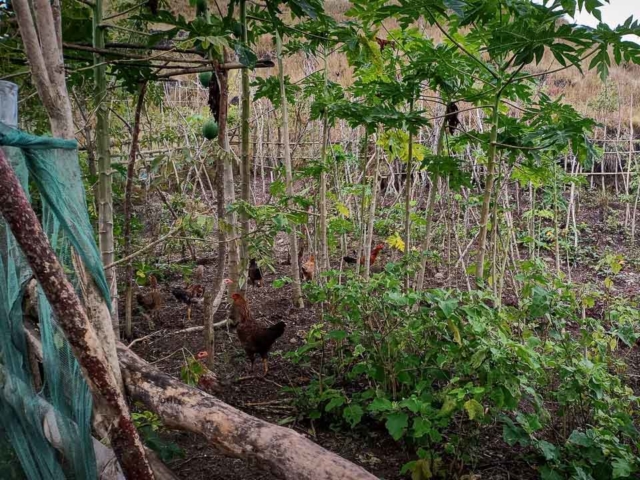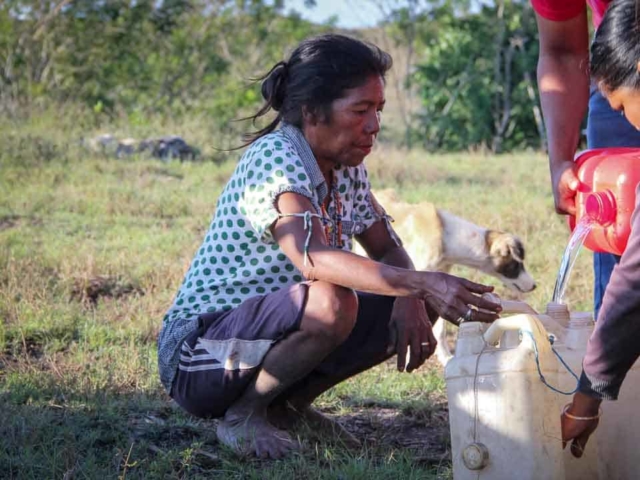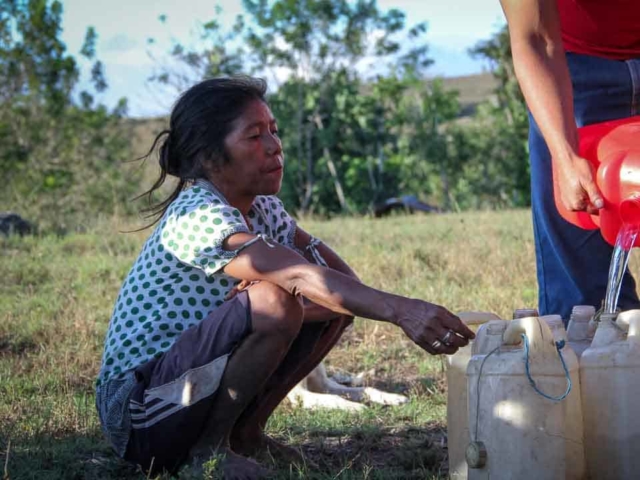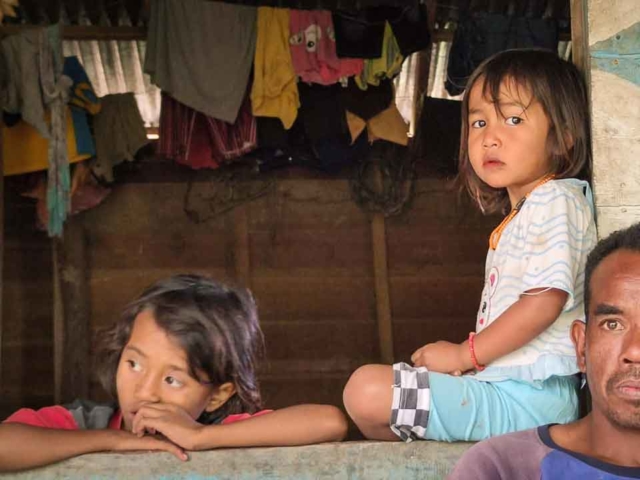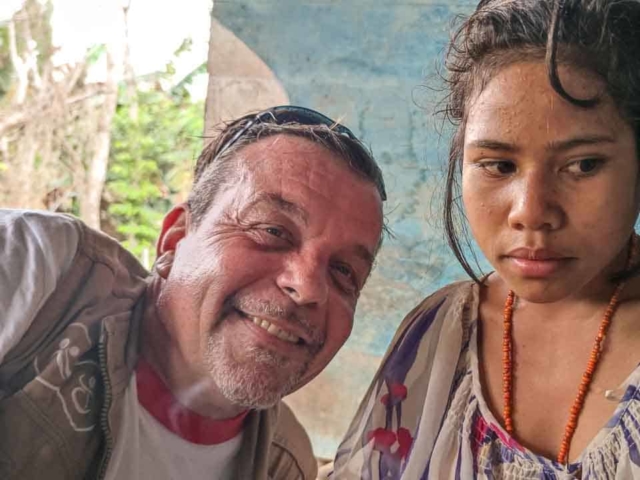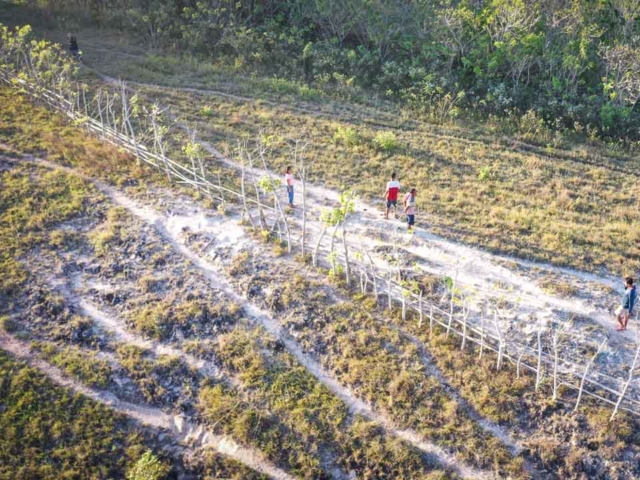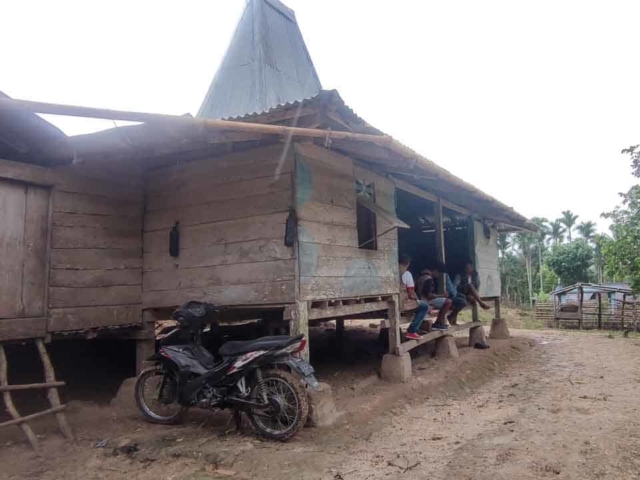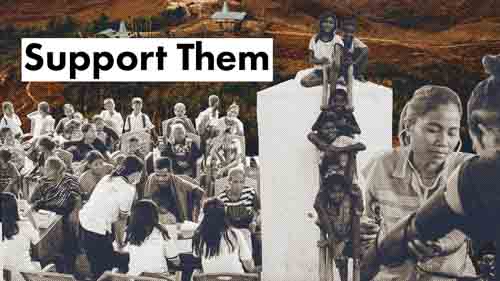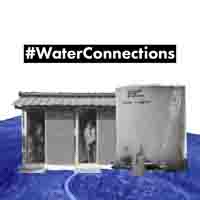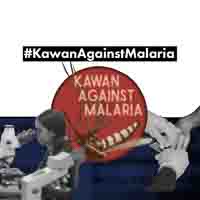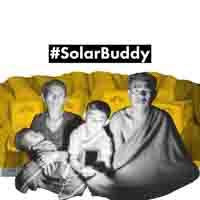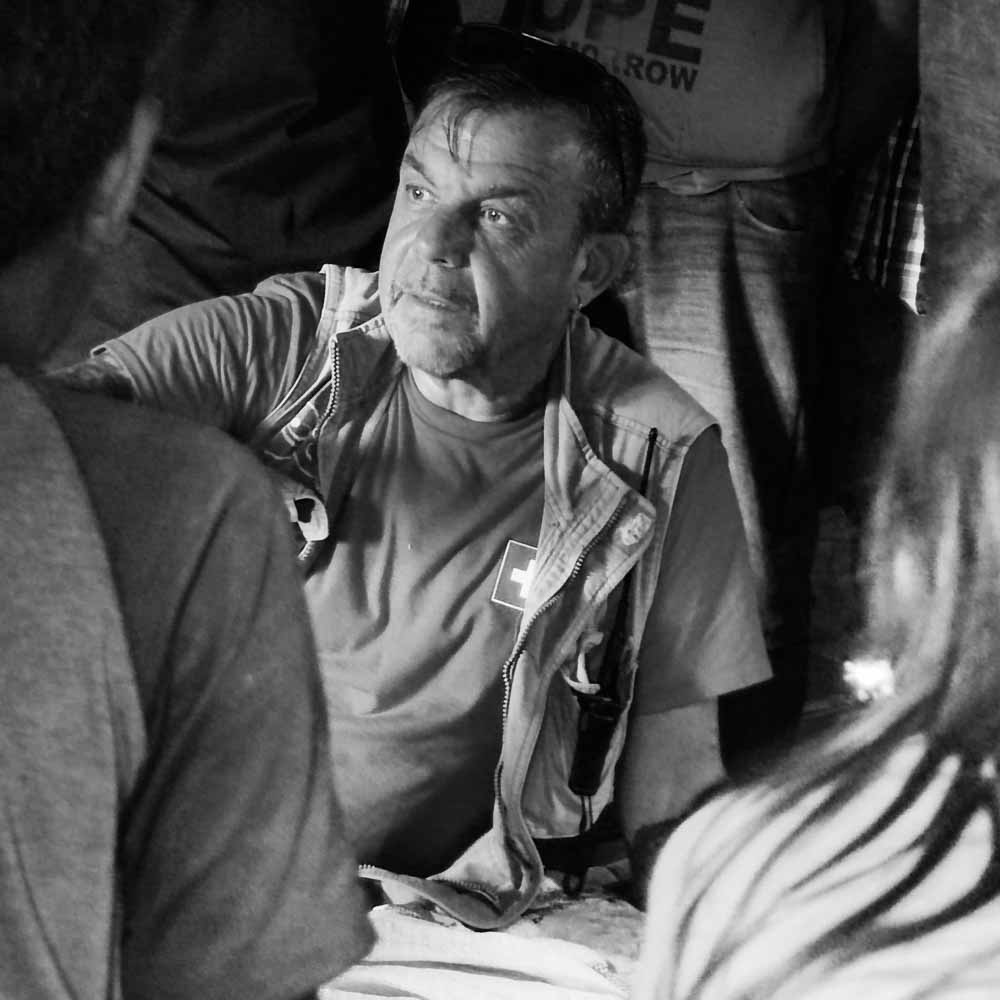URGENT – Water Connections project in Laindatang – A deep borehole, two healthy sanitary facilities and two/three 6,750-litre water tanks.
Laindatang in East Sumba in Indonesia is a village without clean water, toilets, or sanitary facilities. It is a place of extreme poverty, so we categorize this action as red or urgent.
People only wash once a month, are sick and don’t have enough to eat and drink. All children are underweight, and so are adults. We must act for these hundreds of people and give them access to drinking water. The physically most robust people (those who have the strength to fetch water) have an average of two litres of non-edible water per day per person for everything: cooking, eating, drinking, bathing, bathing newborn babies, watering livestock, and going to the toilet. Therefore, you have to choose.
East Sumba in Indonesia is the region where we have been operating since 2019 as part of medical, social and educational projects. It is the region most affected by malnutrition and poverty in Asia. Where we work in ultra-rural areas, 90% of families do not have access to clean water, sanitation facilities or electricity.
Laindatang, Mbatakapidu Village, has no road leading to it. However, we have been working on it for a year. It takes two to three hours off-road to get there. Thanks to our Truck for Life, a medicalized 4×4 truck, and thanks to it, we can regularly go to this village to carry out this feasibility study. A project that aims to provide access to clean water and sanitation facilities to these poor families living in extreme conditions. From our base camp at Rumah Kambera, Laindang is 25 km, about 10 km of rutted dirt and stone roads through hills and fields. The terrain is rough, steep and slippery when it rains. Only adapted vehicles can access this region.
The problem of this impoverished village is linked to water points, which are almost non-existent or very far away. Families suffer from malnutrition, chronic respiratory and joint diseases, diarrhoea and other illnesses related to the consumption of unsafe water and the absence of sanitation facilities and toilets.
Infant mortality is also high, and we are working hard to save lives here through medical programs such as access to primary medical care in ultra-rural areas. To our knowledge, these families have never had sanitary facilities. Peeing and pooping are done behind a tree with all the health problems. It should also be noted that these families do not receive any help besides what we give them. In particular, no government help.
The community has always maximized the use of rainwater for cooking, eating, and drinking water. Washing or doing laundry is done simultaneously: People wash their bodies with detergents directly at the water source. Due to the lack of water, the villagers wash only once a month or, at best, every two weeks.
More information about what were are doing with the #waterconnections all around.
When their rainwater reserves are exhausted, most women and young girls have to walk for hours – between five and ten kilometres – to find water: They often leave in the evening to return home in the morning with only a few litres of water, which they carry in five-litre jerry cans. The nearest water source is on a hill and not accessible for transporting animals such as horses or water buffaloes. Thus, children aged five and women must carry their jerry cans on their heads and at arm’s length when possible.
The village is made up of several groups of houses. Nearly 200 people live here, are everywhere here, a majority of children. They currently have two or three rainwater storage tanks of different sizes, 3000 – 5000 litres, very worn, with rusty irons inside. They need to be healthier reservoirs, and storing water here is dangerous.
These reservoirs are intended to store rainwater during the rainy season (which only lasts two months here). But during the dry season, everything is empty. The villagers themselves built these water tanks. The rainwater that flows there comes from the roofs, so it is dirty. Water storage is a huge problem here as Malaria is intense and mainly affects children under five, pregnant women and the chronically ill. That is to say, almost everyone here!
On this subject, our medical teams are constantly confronted with cases of Malaria, and we lack antimalarial drugs. Mortality is very high here due to Malaria. Stagnant water from old cisterns is a critical transmission factor besides the fact that this rainwater is undrinkable, unhealthy and hazardous to health.
To overcome the lack of water, buying water brought here by a 5,000-liter tanker is possible. These trucks need help to reach the village and the groups of houses to fill the tanks. Once there, the vehicle will also have lost a lot of water, around 1/3 of the 5,000 litres. The cost of a tank truck here is three times more expensive than elsewhere. Linked to the fact that access is challenging.
More details about this project in Laindatang
The project and its realization
Since July 2002, we have been active in this village. Fair Future is working on a new #WaterConnections project similar to those already created and working well.
Our teams have detected several deep sources using our equipment. They are between 60m and 120m deep. The drilling site remains to be determined by the community. The amount allocated depends on the drilling depth and the technical equipment we have to install.
Knowing there is no electricity in the village, setting up a direct current pump and two solar panels is necessary to ensure sufficient flow.
A unique way of working
Fair Future works in all the projects it sets up with local communities. This means that it is the villagers who work with us. They learn new knowledge and share their lives there. In return, we feed them in our canteen and offer them coffee and time together.
This is a model that we have used in absolutely all of our projects. From the smallest to the largest, such as the construction of the SD Mbinudita school, the Water Connections Mbinudita site project (40 reservoirs, 30 sanitary facilities, 4 boreholes) for 300 families, more than 2,800 people.
See the Google Maps of the Water Connections project here.
Duration of the project on site
The start is planned for March 2023 (the month we had designed with them). This also coincides with the end of the rainy season, allowing us to drill and access the Laindatang site.
The drilling should take about two months because the hardness of the ground on site is complicated. We have already seen it before during different drills. The Fair Future teams live on-site for the duration of the project and do not return to Rumah Kambera base camp for the weekend generally.
Beneficiaries
As explained above, it is for all of us at Fair Future and Kawan Baik to (re)start a job that we have already done so many times: To give a healthier, more harmonious life to an entire population.
For Laindatang, more than 200 people will have access to toilets and clean water. The result for them is a reduction in infant mortality and improved living conditions regarding food and water.
A notable improvement in hygiene conditions is linked to the provision of showers and toilets. As seen in all the other #water connections-related projects that Fair Future have implemented, wealth will be generated by creating vegetable gardens.
The risks of this project
The main risk is not finding the water at depth. In this case, it will be necessary to drill again. Even if the risk exists, we always do everything we can to reduce it: We have water source detection equipment that reassures us, and of the dozens of drilled boreholes, we have always succeeded.
The 2nd risk is that the drilling may take longer than expected related to the source of the subsoils. For example, one week to drill 50 cm, as has already happened to us. You have to be patient and have plenty of coffee available.
The 3rd risk is related to a broken drill head. So in all drilling, there is always a part that breaks and a weld to be redone. But we have calculated the risk and have the repair material on site with us.
The other risks are related to on-site illnesses that the Fair Future teams might catch. But we are, I believe, totally immune, having already had everything.
The project in a few figures, the budget
| Deep drilling using our drilling machine: | Chf. 8’000.- |
| An 8-inch Titanium drill head: | Chf. 900.- |
| Temporary water tank to carry out the drilling: | Chf. 500.- |
| About 20 trucks of 5000 litres to carry out the drilling: | Chf. 860.- |
| DC pumps, control boxes and two 3x1m solar panels: | Chf. 2’650.- |
| Electric cables – 2x the depth (160m): | Chf. 825.- |
| Delivery of equipment to the site with a truck capable of transporting the drilling machine (3 tons) and the drilling equipment: | Chf. 500.- |
| Two months of on-site work, food and logistics for the Fair Future teams, Alex included: | Chf. 3000.- |
| Our teams built two 6,500-litre ferro-cement tanks based on those we usually produce. Clean, airtight and therefore protecting against contamination, they give life: | Chf. 980.- |
| Two complete sanitary facilities per gender, built by our teams based on those we usually make. Each facility includes two toilets, showers, a laundry washing point, a safety tank and recovery of clean water for watering the gardens: | Chf. 1’900.- |
| Pipes, casing, fitting, and valves for connecting installations: | Chf. 780.- |
| 2000m HDPE flexible pipes, which will redo the buildings between them: | Chf. 1’350.- |
| Operation of the Truck of Life, trucks, purchase of gasoline for the generator: | Chf. 1’150.- |
| Miscellaneous and Unforeseen: | Chf. 1’000.- |
| Total | Chf. 24’395.- |
La présentation en français de ce projet
Année 2023 – Water Connections – Site du Village de Laindatang – Sumba Est – NTT – Indonésie
Degré d’urgence de ce projet: Rouge
Un forage (très) profond, deux installations sanitaires saines et deux/trois réservoirs d’eau de 6’750 litres.
Ecris par Alexandre Wettstein, Président et fondateur de la Fondation Suisse Fair Future Foundation – No fédéral: CH-550.1.057.027-8 | IDE / UID: CHE-114.715.376 -. Alex est membre des équipes médicales et spécialiste des questions sanitaires de terrain.
Document rédigé depuis le Camp de base de Rumah Kambera, Sumba Est et mis à disposition de tous ceux qui souhaitent nous aider dans ce projet vital pour quelques centaines de familles.
Ce projet est a lire ici en cliquant sur ce lien.
We wish you a beautiful day wherever you are. Remember to take care of yourself and everyone you love. It is the most important.
Alex Wettstein – Fair Future Foundation – 06.03.2023, Rumah Kambera.
Images of our visits to the site. East Sumba, Laindatang village
2023 – Water Connections project in Laindatang – A deep borehole, sanitary facilities and two connected water tanks.
Laindatang, East Sumba, is a village without drinking water. People only wash once a month, are sick and don’t have enough to eat and drink. All children are underweight, and so are adults. We must act for these hundreds of people and give them access to drinking water.
The Water Connections project, Laindatang Site, is one for which we also seek help. Laindatang is a village without drinking water. People only wash once a month, are sick and don’t have enough to eat and drink. All children are underweight, and so are adults. We must act for these hundreds of people and give them access to drinking water. Here Malaria, Dengue fever and infectious diarrhoea linked to the problems of contaminated water are wreaking havoc. After carrying out the feasibility studies, we are now ready to implement this project this month. Indeed, we are on the site now and would like to start this necessary project for the hundreds of people suffering from a lack of water in the region.
By the way, do you know what Kawan Baik means? Nope? So click here to find out Kawan!


